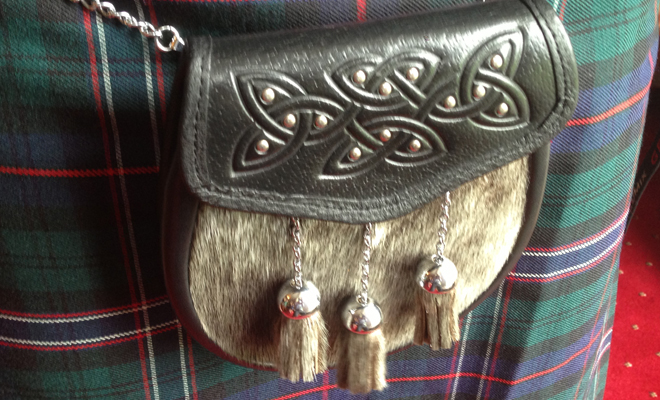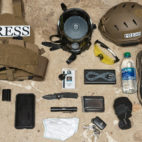Carry History :: The Sporran
Long before Mel Gibson slapped his face with blue paint and charged the English with hordes of bellowing, burly men, Highlanders were swathed in their most famous of attire – the kilt. It’s always been a no-frills bit of kit that allows for a free-swinging freedom of movement. But it’s always had one shining design flaw – it’s pocketless. No pockets at all! And that’s where the humble sporran comes in. Roughly translated into “purse” or “pouch” in Scottish Gaelic, the sporran was traditionally made of deer or calfskin and worn on a leather strap around the waist and some say it’s the grandfather of the modern-day waist bag and bum bag.
It served as a wallet-type container carrying anything from money to pieces of flint and more often than not housed small flasks of Scottish whisky to warm the chests of the Clansmen.
Usually, you’ll spot a sporran hanging low around a Scotsman’s nether region but when they first appeared in Scottish life they were hung alongside the hip to make it easier to break into stride without being hindered by the often repetitive and obviously uncomfortable slapping sensation on the family jewels.
As the modest sporran moved forward and pushed into the psyche of Scottish tradition it transformed from the leather-pouch-with-a-drawstring design to something more ornamental and status-driven. Metal clasps, usually made from brass, were incorporated, and if you were someone important like a clan chief you’d don the pricier silver clasp with elaborate filigree or etchings of Celtic knots and clan crests.
The goat-haired sporran molach or hairy sporran was initiated by the military in the 18th century. It often had flap-tops and large tassels matched with white horse or goat hair and was designed to swish from side to side as the piper marched and puffed into his trumpet. Understandably, this horsing around caused a wave of more elaborate design…
Animal fur became vogue. And fox, horse or even sealskin was used alongside heads of small game animals like badgers or otters to really make the design pop.
And to lift this post to a climactic James Bond-inspired pinnacle, a sporran of that same 18th century ilk is now displayed at the National Museum of Scotland in Edinburgh and is said to “feature a clasp of brass and steel concealing four pistols inside” – a security feature geared to give any thief four little reasons to panic.
Nowadays, the kilt and especially the sporran aren’t as dangerous and are used for more formal occasions like weddings and engagements. Modern kilts have loops at the back through which belts or chains can be threaded. And faux fur, stainless steel and even plastic have replaced the traditional materials after the Scottish government outlawed the use of fur sourced from endangered species. Sadly, as you can see, the humble sporran now houses car keys and mobile phones instead of fire-making flint and small flasks of whisky. But you can put whatever you want in yours and in my opinion it beats the hell out of a run of the mill waist-bag.





 Carry Awards
Carry Awards Insights
Insights Liking
Liking Projects
Projects Interviews
Interviews



















